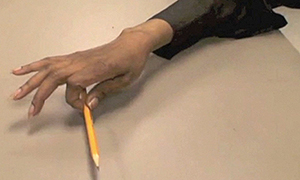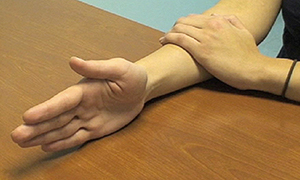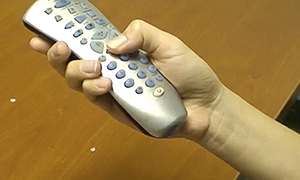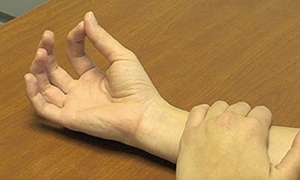Motor Assessment Scale Resources
About This Resource Site:

We invite occupational therapists and physical therapists to use materials on this page as a resource tool for administering the Motor Assessment Scale to clients who are recovering from stroke, including a new scoring system we recommend for using this tool to assess hand items. This new scoring system was developed through extensive research.
Materials include:
- FAQs about the MAS and the new scoring systems we recommend for assessing hand movements and hand activities.
- A video with step by step directions for administering Items 1-6 of the MAS. See Videos
- A video with step-by step directions for using the new scoring system we recommend for assessing hand movements and hand activities (Items 7 and 8).
- "Checking Your Skills": A video showing a stroke survivor's performance on the recommended hand movements and hand activities items, inviting therapists to determine the appropriate score for each of these items.
- Detailed protocols for administering our recommended hand movements and hand activities items. See Instructions and Scoring
- A score sheet for recording MAS scores, when using the new scoring system we recommend for Items 7 and 8. See Instructions and Scoring
- Answer key to the Check Your Skills video.
- Relevant published articles. See References on the FAQs page
About the Motor Assessment Scale:

The Motor Assessment Scale (MAS) is a clinical assessment tool that evaluates eight areas of motor function in recovering stroke patients (Carr, Shepherd, Nordholm, & Lynne, 1985). The MAS uses tasks related to activities of daily living to measure the full range of functional motor performance in stroke survivors. These include:
- Supine to side-lying
- Supine to sitting over side of bed
- Balanced sitting
- Sitting to standing
- Walking
- Upper arm function
- Hand movements
- Hand activities
In addition to having excellent test-retest reliability, interrater reliability and concurrent reliability with other commonly used stroke assessment tools, the MAS is easy to use and quick to administer for stroke rehabilitation (Sabari, Woodbury & Velozo, 2014; Teasell et al., 2013; Zeltzer, 2010). These features make the MAS an ideal assessment tool for clinicians to use when evaluating baseline motor function (post-stroke), developing and implementing interventions, monitoring rehabilitative progress, and determining recommendations upon discharge.

Despite the many excellent qualities of this assessment, clinicians have expressed concerns about the hierarchies used to assign scores on Items 7 and 8 (the hand items) of the MAS (Poole & Whitney, 1988). Sabari et al. (2005) used Rasch analysis to evaluate the validity of the scoring hierarchy of the 3 upper limb items This Rasch analysis of a sample of 100 stroke rehabilitation patients provided support for the hierarchical scoring criteria proposed by the MAS developers for upper-arm function. However, the analysis showed significant problems with the scoring hierarchies for the hand movements and the advanced hand activities items. Specifically, several criteria were not in order of performance difficulty, significant gaps in difficulty were found between adjacent criteria, and some criteria were redundant with one another in their levels of difficulty.

Subsequent studies by independent authors (Aamodt, Kjendahl & Jahnsen, 2006; Pickering et al, 2010) corroborated these findings. Subsequently, two measurement scales were developed and tested with a pool of 332 stroke survivors, for use as items assessing hand movements and hand activities, within the format of the MAS (Sabari, Woodbury, Velozo, 2014). We offer these two new scales as suggested alternatives to the original Items 7 and 8 of this valuable tool for assessing motor function in stroke survivors.
For further information about this resource page, please contact Joyce Sabari at joyce.sabari@downstate.edu